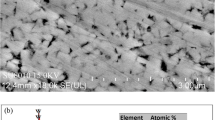Abstract
This study experimentally verifies the feasibility and effectiveness of heat-pipe cooling in end-milling operations. The basic idea is to embed a heat-pipe at the center of an end-mill with the evaporator close to the tool tip, and the condenser at the tool end. Thus, most of heat generated on the end-mill tip can be quickly removed dependent on convection heat transfer by means of heat-pipe. The end-milling experiments were carried out on a CNC vertical machining center under three different cooling conditions, including dry milling, fluid cooling, and heat-pipe cooling. The work material was AISI 1040 steel, and hard alloy was chosen for the cutting tool material. Flank wear is considered as the criterion for tool failure and the wear was measured using a Hisomet II Toolmaker's microscope. The tests were conducted until the end-mill was rejected when maximum flank wear equal to 0.30 mm was recorded. The results validate that heat-pipe-assisted cooling in end-milling processes can effectively perform thermal management comparable to the fluid cooling used pervasively in the manufacturing industry, increasing the service life of the end-mill.
Similar content being viewed by others
References
Johnson D (1996) Why cutting tools fail. Tooling & Production. Huebcore Communications Inc.
Trent E, Wright P (2000) Metal cutting. Butterworth/Heinemann, Oxford
Stephenson DA, Agapiou JS (2006) Metal cutting theory and practice. CRC Taylor & Francis, Boca Raton
Jen TC, Chen YM, Gutierrez G (2002) Investigation of heat-pipe cooling in drilling applications Part I: preliminary numerical analysis and verification. Int J Mach Tool Manufact 42:643–652
Chiou RY, Lu L, Chen JS-J, North MT (2007) Investigation of dry machining with embedded heat-pipe cooling by finite element analysis and experiments. Int J Adv Manuf Tech 31:905–914
Judd R-L, Aftab K, Elbestawi MA (1995) An investigation of a heat-pipe cooling system for use in turning on a lathe. Int J Adv Manuf Tech 10:357–366
Ding Y, Hong SY (1998) Improvement of chip breaking in machining low carbon steel by cryogenically pre-cooling the workpiece. J Manuf Sci Eng 120:76–83
Hung NP, Yeo SH, Oon BE (1997) Effect of cutting fluid on the machinability of metal matrix composites. J Mater Process Tech 67:157–161
Daniels T, Al-Jumaily F (1975) Investigation of the factor affecting the performance of a rotating heat-pipe. Int J Heat Mass Tran 18:961–973
Gutierrez, G (2002) Investigation of heat-pipes for drilling applications, Ph.D. Thesis, University of Wisconsin, Milwaukee.
Sreejith PS, Ngoi BKA (2000) Dry machining: machining of the future. J Mater Process Tech 101:287–291
Peterson GP (1994) An introduction to heat-pipes: modeling, testing, and applications. Wiley, New York
Jen, T.C, Jadhav, R (2003) Thermal management of a heat-pipe drill-A FEM analysis. Proceedings of NHTC03: ASME Summer Heat Transfer conference, 15–24, Las Vegas, Nevada, USA
Jen TC, Gutierrez G, Jadhav R (2002) Progress report for the heat-pipe drill temperatures simulations and experimental measurement, at Lamb Technicon Machining Systems. Warren, Michigan
Kalpakjian S, Schmid SR (2004) Manufacturing engineering and technology. 4th ed. Prentice Hall International
Lu L (2003) Investigation of embedded heat-pipe in cutting tools for dry machining. Masters thesis, Temple University, Philadelphia, Pennsylvania
Acknowledgments
The authors would like to thank the financial support for the project from EPA-STAR grant through RD833357.
Author information
Authors and Affiliations
Corresponding author
Rights and permissions
About this article
Cite this article
Zhu, L., Jen, TC., Yin, CL. et al. Experimental analyses to investigate the feasibility and effectiveness in using heat-pipe embedded end-mills. Int J Adv Manuf Technol 60, 497–504 (2012). https://doi.org/10.1007/s00170-011-3629-3
Received:
Accepted:
Published:
Issue Date:
DOI: https://doi.org/10.1007/s00170-011-3629-3




